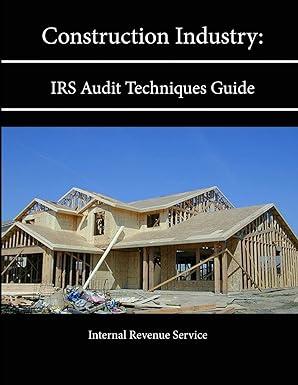Question
Chapter 8 Inventory & Services 1. The INVENTORY module is used: a) By companies using the periodic inventory system. b) By companies using the perpetual
"Chapter 8 Inventory & Services"
1. The INVENTORY module is used: a) By companies using the periodic inventory system. b) By companies using the perpetual inventory system. c) By companies using either the perpetual or periodic inventory systems. d) By companies selling goods only (not services).
2. The Mark-up method in Sage 50 Accounting refers to the calculation of gross profit: Which of the following is the method used in the calculation. a) (Selling price Cost)/Cost * 100. b) (Selling price Cost)/Selling Price * 100. c) Formula based on groups of products sold as a single unit (a printer and a black cartridge). d) Selling price/(Selling Price-Cost).
3. Inventory adjustments are required when: a) Goods are accidentally broken by staff. b) The cost price of goods purchased decreases. c) The selling price of goods increases or decreases. d) Items are purchased that were not in inventory before.
4. Inventory costs are calculated by Sage 50 Accounting on a(n): a) FILO (First In Last Out) basis. b) FIFO (First In First Out) basis. c) Average Cost basis or FIFO (First In First Out) basis. d) On any other basis as setup by the user under System Setup.
5. As discussed in the textbook, the INVENTORY & SERVICES Module can be used when: a) the COMPANY and PAYABLES modules are READY. b) The COMPANY, PAYABLES and RECEIVABLES modules and INVENTORY & SERVICES are READY. d) The EMPLOYEES & PAYROLL module is set to READY.
6. After the INVENTORY & SERVICES module has been set up, which of the following is true: a) The Item field when purchasing or selling merchandise can be bypassed. b) The user can choose to enter the selling entry and the related COGS (Cost of Goods Sold) entry separately. c) Inventory differences are recorded through the Cost of Goods Sold via an account named to suit the business, e.g., Inventory Adjustments, Damaged Goods. d) You will still need to use three inventory accounts, namely, Asset Inventory, COGS Beginning Inventory, and COGS Ending Inventory in your Chart of Accounts.
7. When an inventory item is added to the Inventory Ledger, which of the following is false: a) The cost of the goods will be calculated following the adding of historical invoice information b) Asset, Revenue and Expense accounts must be linked in order for perpetual inventory accounting entries to be recorded. c) The average purchase cost price of the goods is calculated by Sage 50 Accounting. d) Preferred selling pricing can no longer be used.
8. In Inventory, Minimum refers to: a) Lowest number of items that must be kept in stock before re-ordering. b) Lowest number of items that must be kept in for staff use in displays of products for sale. c) The highest number of items that can be ordered by management. d) The number of items that are on order for pending sales orders.
9. In Inventory, the Build from Bill of Materials Journal is used when: a) You need to reduce the number of items you have in stock. b) You need to increase the number of items you have in stock. c) You are returning goods that are damaged. d) You need to put together a package of different products that customers want to buy at a reduced price.
10. The Daily Business Manager: a) Memo tab is used to replace customer records of purchases of service. b) Is required in Sage 50 Accounting when the INVENTORY & SERVICES module is used for service businesses. c) Can be used to organize tasks, sales and clients that need service. d) Is used to control the amount of products (medicine) in stock.
11, In Inventory, Services are: a) Products sold to customers. b) A sale not involving products. c) A sale where the price is reduced due to the wrong goods being shipped. d) The goods being purchased from a company going out of business.
12. Which of the following statements is false? a) Services received and paid for require HST to be charged. b) Products sold to the final consumer require HST to be charged. c) Insurance products require only 8% HST to be charged to the final consumer. d) All of the above are false.
13. Which of the following is true regarding the use of the INVENTORY & SERVICES Module for recording Service business activity: a) Is mandatory if a periodic inventory system is used. b) Is mandatory if a perpetual inventory system is used. c) Can be used if 3 inventory accounts similar to these are available (#1060 Inventory, 5010 Beginning Inventory, 5090 Ending Inventory). d) May be used if the owner's thinks that the module will help manage the service business.
14. The Build from Bill of Materials Journal is: a) Used to record the purchase of material used to make products. b) Used to record the making of a product/package from items in stock. c) Like a Purchase Order, it is a bill for a future purchase of material.
15. Assume that you have completed Chapters 1-8 in the text. One step reversals can be completed in all modules except: a) Inventory Adjustments, Reconciliation & Deposits Journals, Cash Receipts and Cash Payments Journals. b) Inventory Adjustments and Reconciliation & Deposits. c) Inventory Adjustments. d) Reconciliation & Deposits.
Step by Step Solution
There are 3 Steps involved in it
Step: 1

Get Instant Access to Expert-Tailored Solutions
See step-by-step solutions with expert insights and AI powered tools for academic success
Step: 2

Step: 3

Ace Your Homework with AI
Get the answers you need in no time with our AI-driven, step-by-step assistance
Get Started


